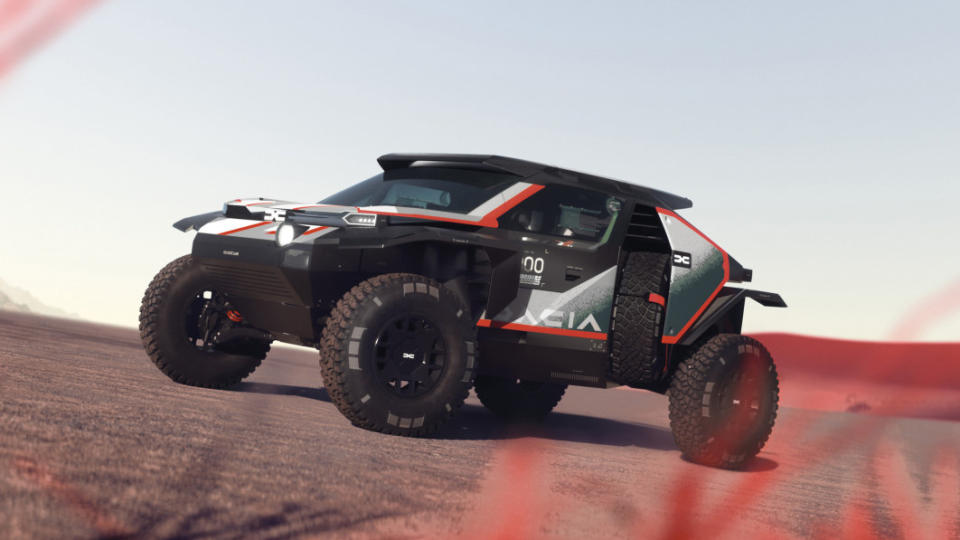Dacia Sandrider turns the 'cool, robust' Manifesto concept into a Dakar Rally race car
The Dacia Manifesto concept started as a battery-electric buggy looking more like a lunar rover in September 2022. The Romanian company putting out some unexpectedly neat vehicles and accessories of late described the Manifesto with the brand pillars, "Essential but cool," "Robust and outdoor," and "Eco-smart." By the time of the Paris Motor Show, Dacia was pitching the concept as a simple, lightweight, hardcore off-roader — still with an electric powertrain of unknown spec — designed to "stand by customers as they become even keener on outdoor pursuits." Eighteen months later, the Manifesto has become the Sandrider, not just a hardcore off-roader, but one being developed to race the top category at the 2025 Dakar Rally.
And even though Audi won this year's Dakar with the all-electric RS Q E-Tron, the Sandrider's gone gas, now powered by a TTV6.
First, a bit of context. Dacia says its partnering with English off-road racing legends Prodrive for Sandrider development, and based on the driver list, Dacia's poached two crews that were in Prodrive Hunters for this year's Dakar. Sébastien Loeb — yes, that one — and co-driver Fabian Lurquin put a Prodrive Hunter on the podium in third place at this year's Dakar. Nasser Al-Attiyah, who's won Dakar five times with three manufacturers, was also in a Hunter, but he retired on stage nine after three days of breakdowns, not explaining his reasons, only saying, "Sorry, I don’t want to jump back into this car." The third Dacia team driver will be Cristina Gutierrez Herrero and Pablo Moreno Huete, who won the UTV Challenger Class in a Taurus T3 Max.
Back to the Sandrider. Dacia designers got rid of everything they could on the Manifesto concept, like greenhouse glass and gauges, and gave most of what was left more than one use. They tried to carry those precepts over to the Sandrider, plus add clever touches to help the racers win. The tube frame chassis is fitted with carbon panels shorn of any ornamentation or unneeded bits. The tools are held in an open space so racers don't need to open a box. A magnetic panel placed near each wheel holds lug nuts during tire changes. The anti-bacterial fabric on the Sabelt race seats is said to regulate humidity. The modular instrument panel allows each crew to organize the workspace to their liking. And anti-reflective paint on the instrument panel helps keep glare out, while an anti-infrared pigment in the bodywork paint keeps overall exterior temperature down on the vehicle.
Engineers went with a twin-turbo 3.0-liter V6 making 334 horsepower and 398 pound-feet of torque, shifting through a six-speed sequential gearbox. It runs on synthetic fuel produced by Saudia Arabia's Aramco (the Dakar Rally is held in Saudi Arabia), with a lot of aerodynamic work on the exterior panels said to result in improved fuel economy compared to competitor T1+ prototypes. The wheel and tire package is about the only conventional thing here, being 17-inch hoops in BF Goodrich rubber.
Sandrider teams have about 9 months of testing ahead before the first real test, at the World Rally-Raid Championship's Rallye du Maroc in October. Three months later, the Sandrider will get face its biggest test in the desert, lining up against at least one other newcomer in the Ranger Raptor Dakar.
You Might Also Like




